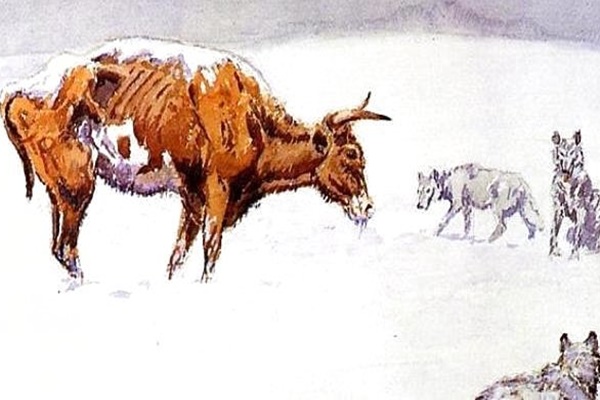Through more than 4,000 recorded works that include oil paintings, watercolors, sculpture, and writing, Charles Marion Russell (1864–1926) expertly captured the art and soul of the American West. Russell accomplished this by creating an academic visual record honoring Western narratives, sweeping landscapes, and magnificent wildlife scenes. His spirit endures even if his work is regarded as historic.
Charlie was a well-known "original cowboy artist" worldwide, yet he humbly preferred friendship to fame. His contagious humor, talent for storytelling, activism, and illustrated "paper talk" letters have helped elevate a beloved legacy. A wide range of people in Charlie's inner circle showed allegiance, including his family, Great Falls neighbors, modern artists, North Plains tribal members, and other notables like John Ford and Will Rogers.
In this article, we will list and discuss some of the most famous and excellent paintings that made Charles Marion Russell a famous painter and cemented his status as one of the foremost painters from his period.
Laugh Kills Lonesome
The 1925 painting Laugh Kills Lonesome is currently housed in the Mackay Collection in Helena, Montana. It was created only a year before Charlie attended the Last Roundup, making it the perfect depiction of a final farewell by an artist.
Since western artist Charles Russell is more interested in mood than verisimilitude, he paints the figures in a very sketchy manner. The sky and the surroundings are simply painted in cool, muted tones. The stars appear nearly heavenly, and the moon shines beautifully in the distance, but neither of these objects casts a cool glow over the scene since they are so far away and difficult to reach.
The campfire in the background gives the chuck wagon, some basic tools, and the cowboys a cozy glow, adding to the picture's overall warmth. They are just a group of men who are content after a long life of work, appreciating the outdoors, their lifestyles, and one another. There is nothing particularly admirable about their attitudes or deeds. One lights a meditative cigarette, another finishes the rest of the coffee, and two play cards together.
The last few years of Charlie's life were spent in poor health, and in this painting, it is clear that he is contemplating his past. However, it is not a look of sadness or loss but a look of contentment. Perhaps the title of the painting, Laugh Kills Lonesome, best captures the essence of the genuine Charlie Russell.
When The Land Belonged To God
The painting "When the Land Belonged to God" is about the Native American culture of the Great Plains. Russell painted the painting in 1920 when he was at his peak as an artist. In this piece, he shows how important horses were for Native Americans living on horseback.
The background has two horses running past a rock formation shaped like a buffalo's head (the symbol for strength and protection). The horse also represents power, as it was used for hunting and transportation by both men and women.
Big Game Animals
"Big Game Animals," painted in 1901, is one of Russell's most famous works. It was exhibited at the St Louis World's Fair that same year, where it won its artist a gold medal from the National Academy of Design. The painting depicts an African lion and a leopard pursuing an impala antelope with their prey in their jaws. The colors are vibrant and vivid, making this painting one of his most impressive pieces on canvas.
Buckskin Joe
The painting depicts an old cowboy sitting on his horse for some time. He is wearing a buckskin jacket, which was popular in the 1800s. You can see that he has two guns attached to his belt and an extra one in his hand. He looks like he's ready to go out into the wilderness and hunt something down!
The painting also features an interesting composition: it uses color, line work, and texture, as well as shapes, to create what appears to be another world within our own (or at least within this particular scene).
The Death of General Custer
This painting shows a Sioux warrior riding away from the battlefield, where he has been involved in a conflict. The horse is in the foreground, and Custer's body is slumped to one side of it.
This painting was created after news reached Russell that General Custer had been killed at Little Bighorn. It depicts how Russell felt about losing his friend: "[The Death of General Custer] shows him getting shot," says curator Beth Crawford-Mason, "and then falling off his horse."
A Tale Of Two Wolves
"A Tale of Two Wolves" is an oil painting by Charles Marion Russell. The work depicts two wolves, one small and one large. The smaller one represents the good side of human nature, while the larger one represents evil.
Conclusion
Charles Russell was known for his paintings of cowboys and Indians, exhibited at the 1893 World's Fair in Chicago. As an artist, he lived in the west and painted many portraits of famous people and events. He also painted some pictures of himself as a cowboy!








No comments
Post a Comment